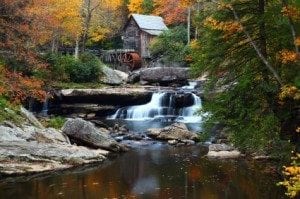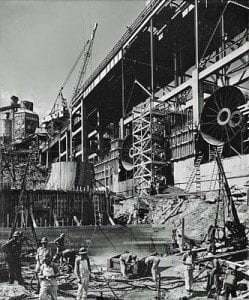 Hydropower has been used in the U.S. since the late 1800’s and the origins of the technology reach back thousands of years. Ancient cultures from the Greeks to Imperial Rome to China used water-powered mills for essential activities like grinding wheat.
Hydropower has been used in the U.S. since the late 1800’s and the origins of the technology reach back thousands of years. Ancient cultures from the Greeks to Imperial Rome to China used water-powered mills for essential activities like grinding wheat.
The precursor to the modern hydro turbine was developed in the mid-18th century. One hundred years later, inventors were steadily improving the efficiency of these technologies. In 1849, an engineer named James Francis developed the Francis Turbine, the type of turbine that is most widely used today.
Hydropower Milestones
1849: Invention of the Francis turbine.
1882: The world’s first hydropower plant begins operations in Appleton, Wisconsin, on the Fox River.
1887: The first hydroelectric plant opens in the West, in San Bernadino, California.
1907: Hydropower accounts for 15 percent of U.S. electrical generation.
1920: Hydropower accounts for 25 percent of U.S. electrical generation.
1931: Construction begins on the Hoover Dam, ultimately employing a total of more than 20,000 workers during the Great Depression.
 1937: The Hoover Dam begins to generate power on the Colorado River.
1937: The Hoover Dam begins to generate power on the Colorado River.
1941-1945: Bureau of Reclamation dams ramped up power output to support America’s efforts in World War II, producing enough electricity to make 69,000 airplanes and 5,000 ships and tanks during a five-year period.
1980: Conventional hydropower capacity is nearly triple compared with 1920 level.
Today: A vast expansion of hydropower’s potential is possible through new technologies for conventional, pumped storage and marine and hydrokinetic projects, modernizing existing hydropower facilities and adding generation to existing non-powered dams.
Source: DOE


